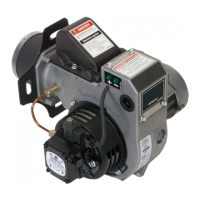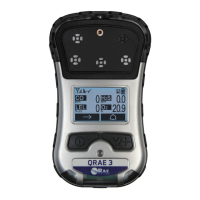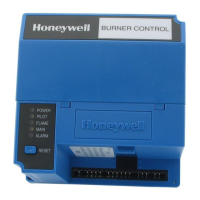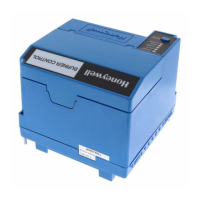17
Honeywell Titan SCBA, 20132
a. If the cylinder valve incorporates a locking
sleeve, disengage it by pushing in and turning it
counterclockwise as far as it will go.
b. Regulate the amount of air ow by manually
throttling the cylinder valve.
c. IMMEDIATELY exit to a safe area.
d. Have the SCBA inspected and/or repaired by a
Honeywell-certi ed repair technician before reuse.
5. PROBLEM: Second stage regulator accidentally
disengages from facepiece
a. Hold your breath. Locate the regulator using the
regulator supply hose (the regulator will be free-
owing), and immediately insert the regulator into
the facepiece. Resume breathing.
b. Push the regulator rmly into the facepiece.
Ensure that both AIR KLIC buttons are engaged.
c. IMMEDIATELY exit to a safe area.
d. Have the SCBA inspected and/or repaired by a
Honeywell-certi ed repair technician before reuse.
I. Doffi ng
WARNING
Doff the SCBA only in a safe area. Failure
to comply with this warning may lead to
personal injury, illness, or death.
1. Press the second stage regulator shutoff button.
2. Press the two release buttons and remove the
regulator from the facepiece.
3. Disengage the cylinder valve locking sleeve (if so
equipped) by pushing it in and turning it counterclock-
wise.
4. Close the cylinder valve and re-engage the cylinder
valve locking sleeve (if so equipped).
5. Press the override button or open the bypass valve
on the second stage regulator to vent air from the
SCBA.
6. Close the bypass valve.
7. Push the second stage regulator into the waist-
strap-mounted or shoulder-mounted regulator holder
until it clicks.
8. Place your thumbs under the headstrap buckles,
loosen the straps, and remove the facepiece.
9. Clip the D-ring from the facepiece buckle onto the
shoulder strap snap hook.
10. Unsnap the waist strap and optional chest strap,
loosen the shoulder straps, and remove the SCBA.
11. Prepare the SCBA for storage.
J. Cylinder Removal and Replacement
1. Cylinder Removal
a. Close the cylinder valve and re-engage the
cylinder valve locking sleeve (if so equipped).
b. Press the override button or open the bypass
valve on the second stage regulator to vent air
from the SCBA.
WARNING
• Use extreme care when changing cylinders.
DO NOT allow moisture or ice to enter the
regulator system. Moisture or ice entering
the regulator system may cause the SCBA
to freeze up, restricting or stopping air fl ow
to the user, resulting in death or injury.
• ONLY grasp the cylinder valve handwheel
to open or close the valve; DO NOT pick up
or carry a cylinder by the handwheel, drop
a cylinder on the handwheel, or bump the
handwheel, as this may cause the cylinder
valve to inadvertently open, which may lead
to the cylinder becoming airborne under the
thrust of air released from the open valve,
causing injury or death. ALWAYS pick up
and carry an air cylinder by the cylinder
body.
• Failure to comply with this warning may
lead to personal injury, illness, or death.
c. Remove the CGA handwheel from the cylinder
valve by rotating the black handwheel counter-
clockwise.
d. Remove the cylinder as follows:
i. Loosen the tank band by pressing down on
the release lever on the right hand side of the
SCBA with your thumb (press toward the SCBA
backplate) and ipping the cam-over buckle up
and away from the backplate with your index
and middle ngers.
ii. Remove the cylinder by sliding it upward
beyond the tank band.
2. Cylinder Replacement
WARNING
• To prevent back injury, use proper lifting
techniques to lift the fully charged cylinder.
• ONLY grasp the cylinder valve handwheel
to open or close the valve; DO NOT pick up
or carry a cylinder by the handwheel, drop
a cylinder on the handwheel, or bump the
handwheel, as this may cause the cylinder
valve to inadvertently open, which may lead
to the cylinder becoming airborne under the
thrust of air released from the open valve,
causing injury or death. ALWAYS pick up
and carry an air cylinder by the cylinder
body.
• Failure to comply with this warning may
lead to personal injury, illness, or death.
CAUTION
Do not damage the cylinder valve threads.
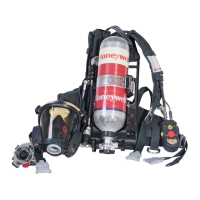
